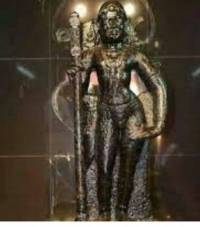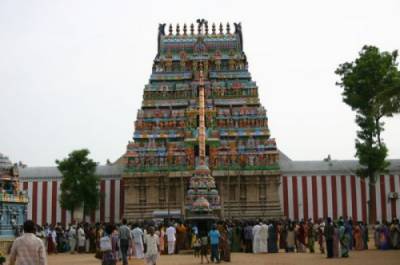Another temple, I wish to visit soon, is the Palani Temple, also known as Dhandayuthapani Temple. This temple located in the town of Palani in the state of Tamil Nadu is dedicated to Lord Murugan, who is also known as Karthikeya or Skanda, the God of war and victory. Palani Temple is third of the Six Abodes of Murugan (Aarupadai veedugal).

Palani Dhandayuthapani Temple is known for its beautiful architecture. The sanctum of the temple is of the early Chera architecture. The temple complex is spread over an area of 10 acres and consists of several halls and shrines, including the main sanctum, which houses the idol of Lord Murugan. The temple is situated upon the higher of the two hills of Palani, known as the Sivagiri.
The temple is also known for its rich history and legends. It is said that the temple was built by the Tamil saint-poet Nakkirar in the 7th century AD, and that the original temple was built using the nine Navagraha (nine planets) as the nine stones for the foundation, which is why the  temple is also known as “Navagraha Temple”.
temple is also known as “Navagraha Temple”.
The idol of the Muruga in Palani was created and consecrated by sage Bogar and it is made out f an amalgam of nine poisons or Navapashanam. Palani temple is known for Panchamritam, a sweet mixture made of five ingredients.
 The temple is a major pilgrimage site for Hindus, and is thronged by thousands of devotees every year. The temple also hosts several festivals throughout the year, the most important being the annual Panguni Uthiram festival, which is celebrated in March/April.
The temple is a major pilgrimage site for Hindus, and is thronged by thousands of devotees every year. The temple also hosts several festivals throughout the year, the most important being the annual Panguni Uthiram festival, which is celebrated in March/April.
 One of the main traditions of the temple, is the tonsuring of devotees, who vow to discard their hair in imitation of the form that Kartikeya assumed here. Devotees carry Kavadi (an ornamental mount decked with flowers, glazed paper and tinsel work), on foot from long distances and is a commonly followed worship practice.
One of the main traditions of the temple, is the tonsuring of devotees, who vow to discard their hair in imitation of the form that Kartikeya assumed here. Devotees carry Kavadi (an ornamental mount decked with flowers, glazed paper and tinsel work), on foot from long distances and is a commonly followed worship practice. 